One of my favourite photographic destinations is Johnston Canyon, particularly in winter. Carved steeply into the limestone bedrock by thousands of years of water erosion, the dramatic Johnston Canyon is one of the better photo sites in Banff National Park. Overhanging canyon walls, waterfalls, the deep pools of Johnston Creek, and lush forest present a multitude of scenes. And, it can all be experienced via an an easy hike along smooth trails and catwalks. Light conditions can be challenging. The canyon is narrow and its steep walls are high by comparison, limiting the ability for light to penetrate. The light is patchy, creating strong contrast between the illuminated and darker areas. The challenge is worth accepting; the rewards of capturing the beauty it creates are very satisfying. I and my stalwart companions, Stewart Hamilton and Sal Lovecchio embraced the challenge and today I’ll share my photos from our visit.
My first photograph features a view of the canyon’s sidewall from an elevated catwalk. The wall was well illuminated with only a few shadows cast onto it by the trees above me. The rock wall is coated by ice from water flowing in from above. The azure colour is quite typical of water in the Rockies, although in this picture, the ice is largely obscured by accumulated snow.
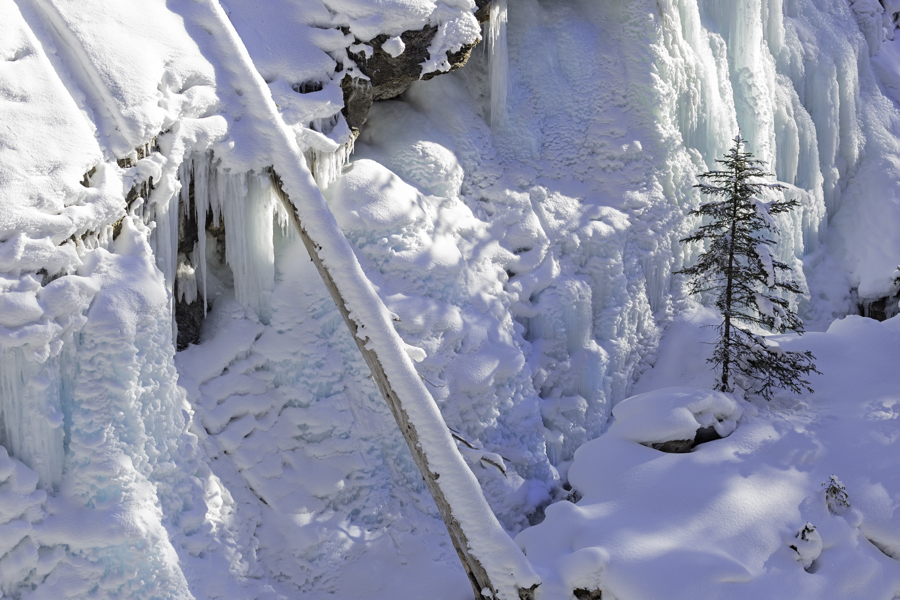
This photo demonstrates the absence of direct sunlight in much of the bottom areas of the canyon. I’m standing on the ice where Johnston Creek would normally flow. A very little bit of sunlight is impinging on the sidewall behind the catwalk. It appears that snow had no difficulty getting in.
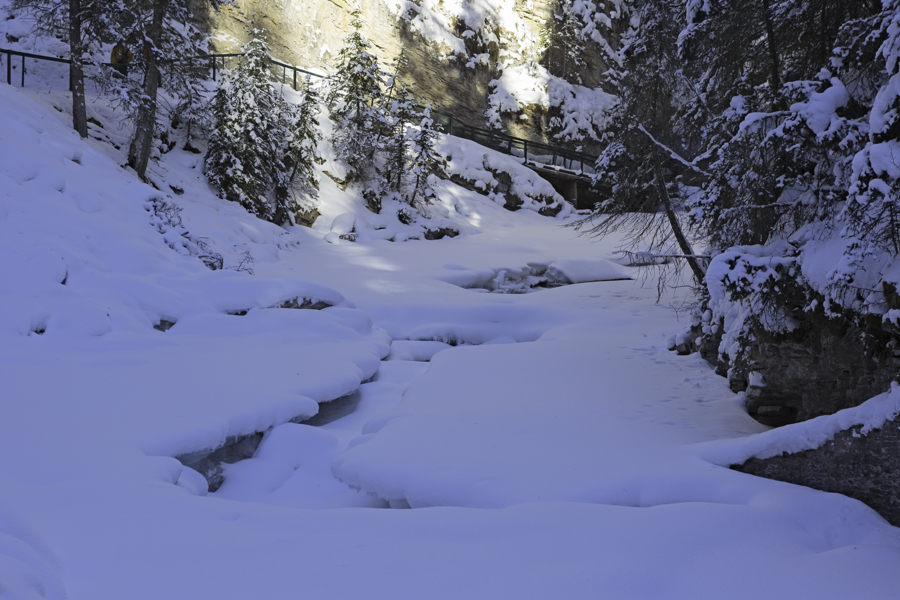
Looking to my right, my photographic eye was attracted to this grotto-like formation, undercut by the creek. Snow is drifting in toward it, creating some interesting shapes. I like the shadowing on these pristine, snow formations.
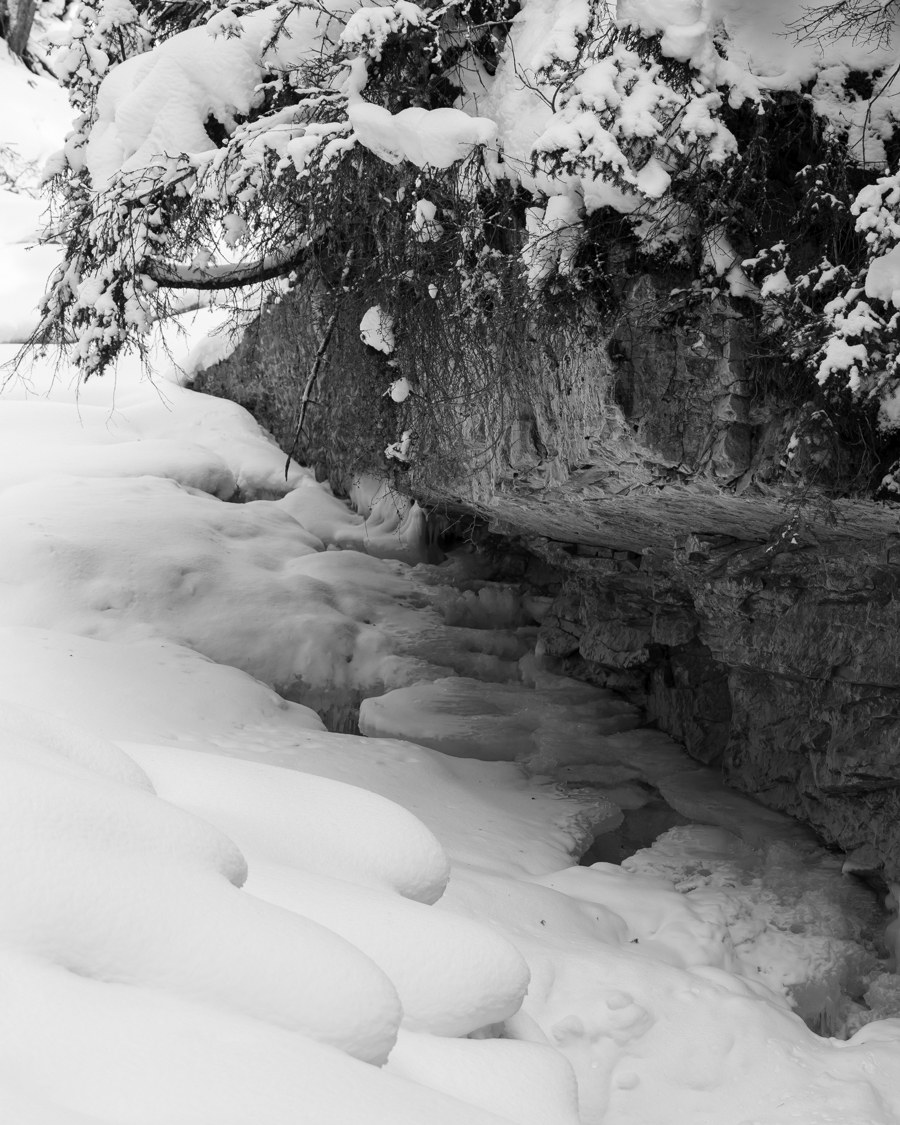
Viewed from the catwalk, there are many interesting views of the canyon floor, including these next two. The first is largely shaded with a little direct sunlight illuminating patches of the rock.
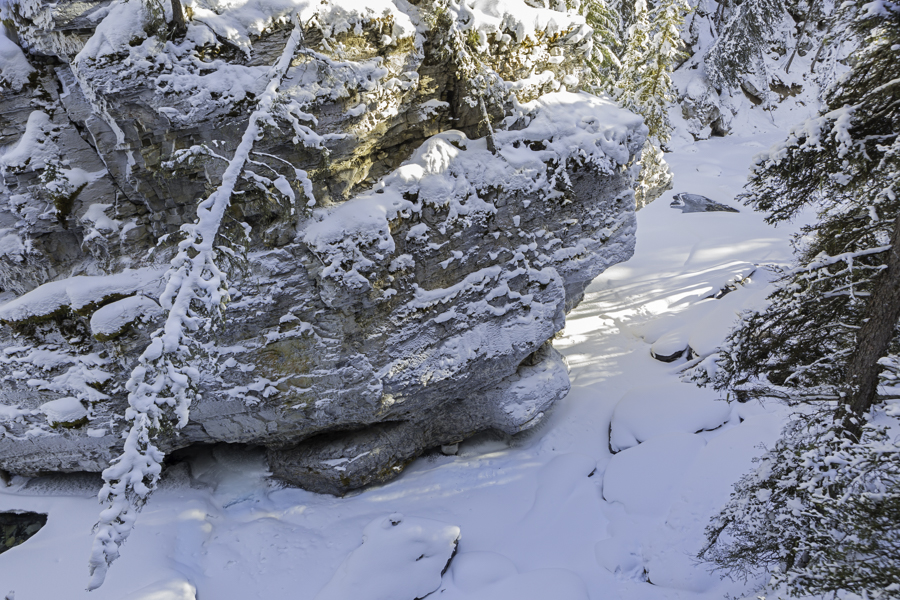
Good light was available to capture this very small opening in the ice. The creek is very shallow at this point, as evidenced by its rocky bottom, close to the water’s surface. The opening may not last. If you look closely you can see ice forming from the opening’s edges inward. Will the air temperature prevail over the water flowing beneath, closing the gap and forming a surface where snow can accumulate?
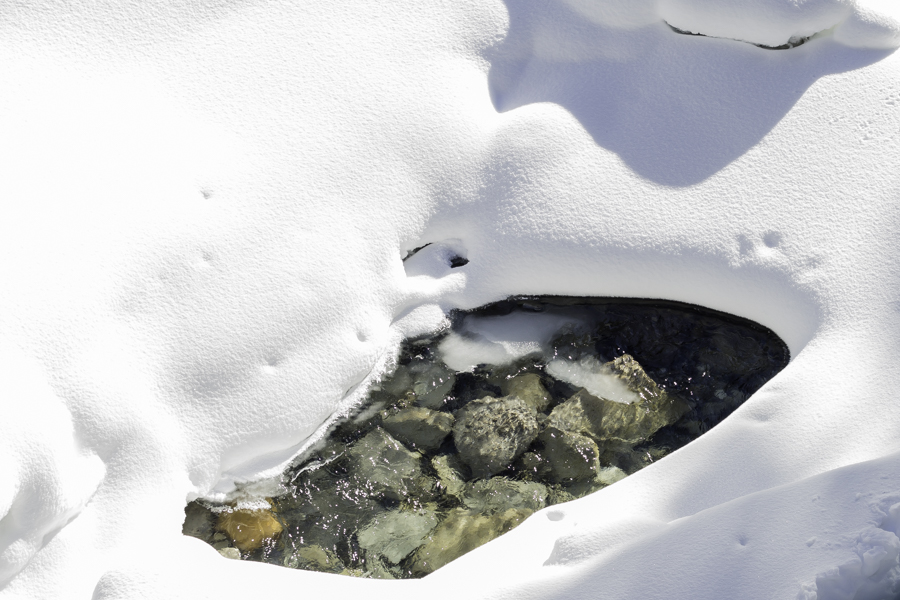
My last stop, walking up the canyon was the lower falls. It’s also my last photograph for this post. This is a great example of the variation in light in the canyon. As you can see, water is flowing beneath the frozen surface of the waterfall. You see it spilling into the pool below. The photograph doesn’t show the movement of the water behind the ice but you can see it flowing from where I was standing. Need a video to share that experience.
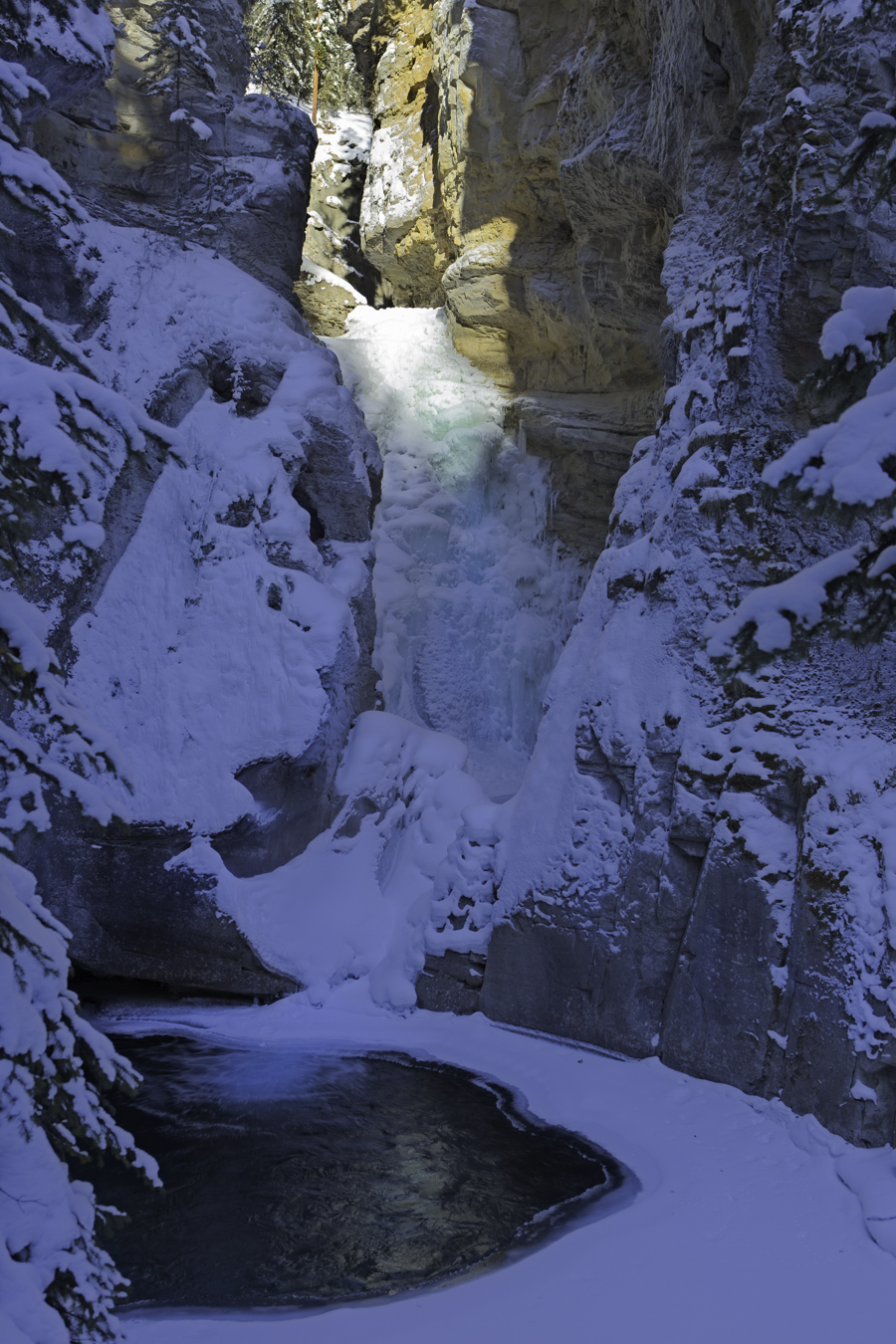
I have more pictures from yesterday’s outing. In the interests of keeping the length of these posts within reason, I’ll post those shots from Castle Junction and the Vermilion Lakes in a subsequent blog.

Great shots Peter!
Have not visited Johnston Canyon for too long and never in Winter.
Terry
Beautiful photos. Nice to see the snow from the desert:-)